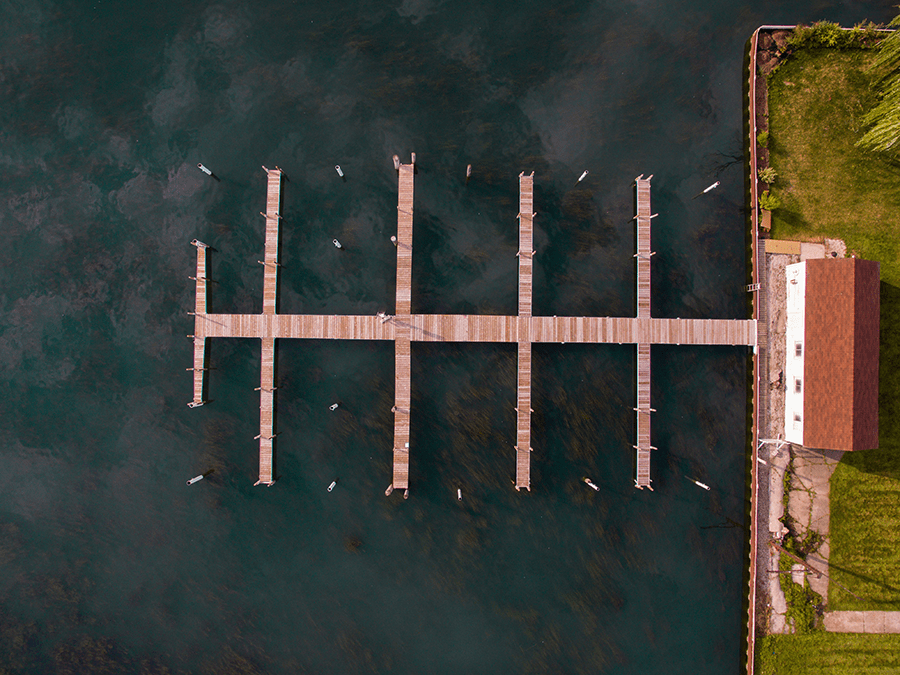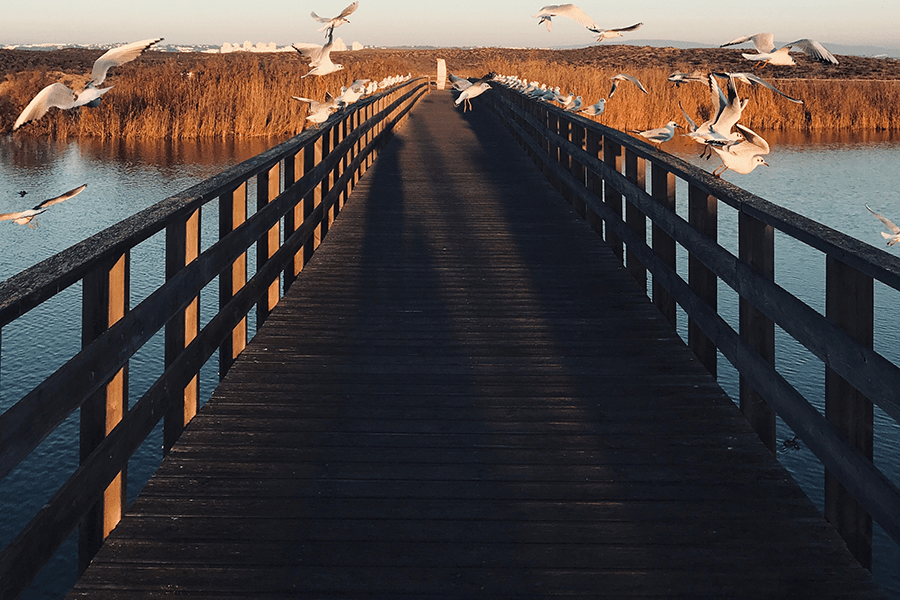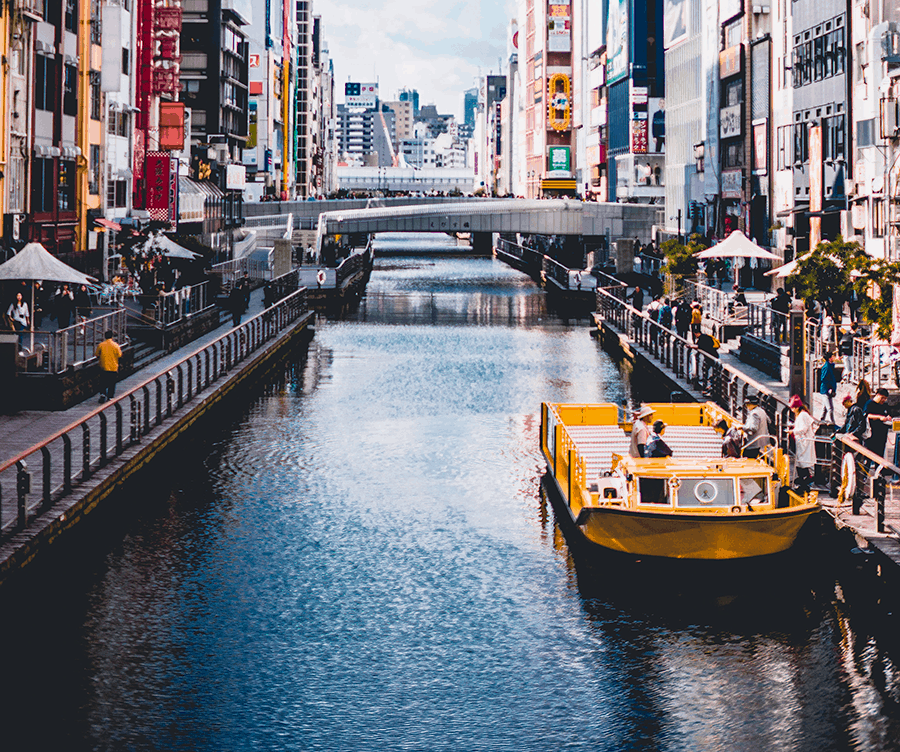
Magnet fishing is become a very popular past time for many people around the world. The excitement of snagging something big underwater and knowing that it is metal is an exhilarating experience.
However, some locations are better suited for this hobby than others, we have compiled the top 11 places you should look for when you embark on a magnet fishing adventure. These are not in any particular order, because local “hot spots” vary by location. The more populated or visited locations, the more likely there is something under the water waiting to be found!
1. Boat Docks
Getting out on the water on a boat is a fun experience. However, there is that tricky first step from the dock to the boat that can result in items falling from those making the leap across. This is also a location where a lot of boat maintenance occurs, which can mean lost tools!
This area is best suited for drop, bounce, recover type of method. Most items lost from a person will have fallen in-between the boat and the dock. Remember to allow about a foot or two in either direction (toward or away from the dock) to account for any drifting and settling.
Don’t forget to also try and get underneath the dock itself. Some items will have drifted underneath during their decent, and others may have been pushed that direction by waves, storms, and propellers etc.
Even though this area is suited for the drop method, it might not be a bad idea to throw your magnet a little farther and drag it back. This could capture any objects that fell on the opposite side of the boat or have drifted further out.
It is not recommended that you hunt these areas when a boat is present. There are many metal components to boats and you could end up damaging it or getting your magnet stuck.
2. Piers
Piers are another great location to search for some lost treasure. These man made peninsulas are very popular locations for business and pleasure. The more traffic a particular pier sees, the great the probability of finding something.
The vast majority of piers are used for social gatherings or as public park type environments. As a result most unintentionally lost items will be fairly close to the pier structure itself. Dropping a magnet straight down works great here.
Some items are purposefully thrown into the water. Maybe this was done just for fun or perhaps more sinister motives were at play. Either way it is a good idea to throw the magnet out and pull it back in multiple directions.
Also consider ocean currents and waves if applicable. These processes can move items in any direction. Walking up and down the shoreline might not be a bad idea.
Be cautious of piers made of metal or those with metal supports. Your magnet could get stuck or you could get hurt due to pinching or flying magnet shards.
3. Boat Ramps
Boat ramps are another good place to attempt to recover some treasures. These shallow sloping ramps are visited by many people of varying boat and trailer driving skills. Many items can be found here that have either fallen from people, boats, or trucks and trailers.
This location is a good one to put on your duck boots or waders and walk the ramp. Let your magnet hang just above the ramp as you walk. Most magnets will be strong enough to catch anything lying on the bottom. Most boat ramps are concrete and dragging your magnet across it could cause unnecessary damage.
You can also wade out pretty far into the water using these ramps. This provides a great launching place for magnet fishing into deeper waters.
4. Bridges

Many different things fall and/or are thrown from bridges. These locations are usually a necessity when built, thus making them prime spots for hunting.
Small foot bridges are one type to consider when magnet fishing. These bridges are usually found in local parks, or neighborhood communities. The more use the bridge gets, the better the odds of something getting lost.
Both methods are good for this location. dropping the magnet off the bridge is preferable here as most of these small bridges are over relatively stagnant bodies of water. Currents and waves are typically not a factor here. However, some things could have been thrown from the bridge resulting in the items being further out. Fishing gear is a prominent find here.
Larger bridges such as roadways are also good for magnet fishing. Many things fall from cars, out of truck beds, off trailers, or are thrown from these bridges. This location is best suited for throwing your magnet into the water and retrieving it as it skims the bottom. Some waterways you will be able to search the entire span, others will be too large. For larger waterways, search one side of the water, then traverse the bridge and hunt the other side.
Finds in these areas can be extremely random and varied. You may find nothing but scrap metal and trash, or a bag of potentially stolen jewelry.
5. Fishing Docks
Fishing docks can yield a lot of different types of treasures. These dock are visited by serious fishermen as well as families just looking to kill some time. Most of them do not have any form of safety features to stop items from falling into the depths below.
Search on all sides of the docks by dropping the magnet over the edge. Also be on the look out for areas adjacent to the dock where people might bank fish as many anglers know, fish love to hide under the docks. This under dock area is not easily fished on the dock.
You will find lots of fishing gear here, so be careful of hooks. We recommend wearing a good pair of puncture proof gloves to avoid injury. Fishing poles, lures, tools such as pliers, are common, but that is not to say something more interesting isn’t hiding below.
6. Swimming Holes
Many things go missing when people go swimming. Thats not a saying but it should be. When people are enjoying their time in the water, they often forget to remove things from their pockets or forget where they put items before they take the plunge.
Search areas where people jump into the water. Many things get lost when people do this. If the swimming area is in a moving water way such as a river, then consider searching down stream some as well to account for movement of items with the current.
Another good place to search is where people get out of the water and enter dry ground, as this transition causes lots of things to fall. Search the entire swimming area, pay attention to deeper areas where something might have fallen and was too deep to recover.
Also be sure to spend a little time around any natural water features such as small rapids, large boulders, exposed bedrock, and small waterfalls. These natural features could act as a stopping point for anything being carried through the current.
Always use caution when entering any moving waterway. Things can be slippery causing falls. There are other inherent dangers as well such as drowning.
7. City Canals

Many downtown city scapes feature a man-made canal that runs through them. These concrete river ways collect a vast multitude of stuff just waiting to be found.
There is no certain areas to search in these locations. Busy areas result in lost items, but more isolated areas allow things to be thrown in without anyone seeing.
There could be almost anything laying in the bottom of these canals. In an article* by KOCO (a news station in Oklahoma City) states that they find all sorts of things when they drain the canal for maintenance. Wallets, phones, shopping carts, and electric scooters are just a few of the items they have found!
8. Tubing Routes
A lazy day on the river can be a lot of fun and relaxing as well. Many of people have fallen asleep and lost a thing or two.
If you can search the entire route then do it. This gives you the best opportunity to find something. Things have the potential to fall almost anywhere along the route.
If you can not search the entire route concentrate your efforts on the start and finish areas of the route. It is also a good idea to search a little downstream from both of these locations to allow for item drift.
Just as with swimming holes, be careful as there are dangers to hunting these areas which could result in loss of equipment, physical injury, or even death.
9. Public Park Ponds
Public parks are a hot spot for social gatherings, especially those with a nice pond as a feature. People visit this location for exercise, family gatherings, concerts, recreational fishing, bird watching, parades, community events, etc. This results in lots of opportunity for people to lose things.
If the pond is small enough, search the entire thing. Start at one end and methodically work your way around the water. If the pond is too large or you don’t have the time to search the whole thing, concentrate on areas such as bridges or where walking trails come the closest to the water.
You will find a lot of trash in this area but there could also be some interesting items here as well. You will also find a lot of fishing gear if fishing is allowed at the site. Be sure and have some good puncture proof gloves.
A final thing to consider when hunting this area is to make sure you remove any trash you find. This helps clean the pond and is the responsible thing to do. Additionally others will appreciate your actions and are less likely to complain about your activity. It could work against you and even result in a fine for littering if you are seen throwing the items back into the water.
10. Rivers

Rivers can be great places to find all kinds of stuff. The best part is that one never knows where the items could have come from as they could have been carried a good distance from their source. Hunting rivers is sporadic at best, but always worth trying.
Sometimes you can see items in the river if you are looking hard enough. These can be good targets but also might be hard to retrieve depending on how they are sitting on the bottom.
There are no real secret spots for hunting rivers, as any place can be just as good or as barren as the last. A good time to hunt rivers is after the river has swollen and then reduced itself to normal size. This happens after big rains etc. This is a good time because the heavy current could have brought some stuff down river and deposited it as the current slowed.
Searching the inside curves of the bends of the river is a good tactic as well. Here is where the water slows down which could result in items falling to the bottom.
The same river and even the same spot can be hunted multiple times throughout the year as currents could deposit more items. Again, after big rains or floods make a great time to return to a previous hunted location and try again. Keep trying, you never know when something will was down.
Another good spot to keep an eye out for is shallow areas where the river is narrow. These locations could have been used as river crossings a long time ago. As a result you may be able to find some interesting old items.
As with the other river type locations listed above, be vary cautious when magnet fishing in these areas.
11. Historic Sites
Historic sites can yield some really cool finds, but they can be difficult to obtain permission to hunt in. Historic sites include battlefields, known river crossings, major homes or business next to rivers, etc.
If you can not obtain permission to hunt the actual site, consider finding the closest section you can, preferably down river. Any particular historic site could have had activity occur up or down the river.
Final Considerations
To check out our recommended gear please visit our resource page.
Always know local laws and regulations before you begin any magnet fishing hunt. Ignorance of the law will not excuse you from it. Fines or jail time can occur if laws are broken. It is illegal to magnet fish in state owned waters in South Carolina. You can read why as well as where you can hunt in SC here.
Also always get permission where applicable before you begin. It is also a good idea to agree to what will happen with any finds. Discuss who will keep them and what will be done with any money obtained as a result of the finds on someone else’s property.
Also always consider the hidden dangers that may be present in any of these hunting locations. Loss of equipment, serious injury or even death is a possibility, hunt at your own risk.
Have fun and stay safe!
*news article can be found here:
Dock Photo by Aaron Burden on Unsplash
Bridge Photo by Fabian on Unsplash
Canal Photo by bantersnaps on Unsplash
River Photo by Nathan Anderson on Unsplash
